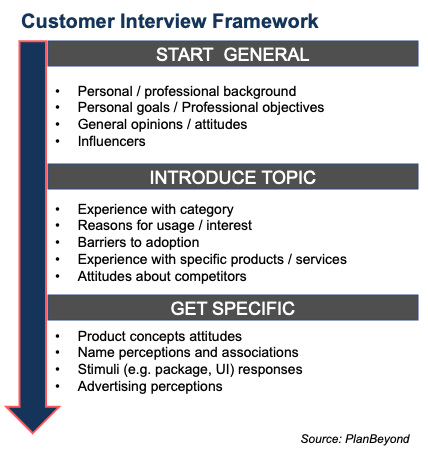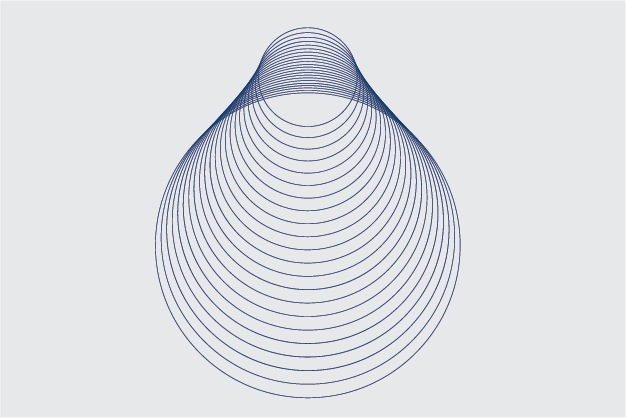Some of the richest data to inform business strategy, marketing execution, and go-to-market planning comes direct from customers. You get feedback directly from people who know what they need, how they need it, and what they expect you to deliver.
The data is invaluable. But first, you need to figure out how to gather it up.
Our standard customer interview framework informs a seamless process. Whether it’s performing B2C or B2B interviews, using the structure below will ensure you collect actionable data, all while giving your customers a natural interview experience.
Using A Structured Customer Interview Framework
Let’s walk through our typical customer interview framework. The process starts high level and then transitions to targeted topics. It’s a logical interview flow to introduce topics in an organic way.
Start General
You don’t want to dive into the deep end of a pool without dipping your toe in first. The same applies with interviews. You need to get respondents comfortable talking with you. And, you need to get them in the right head space to talk about your general category or product.
That’s why your interviews should start with general topics first. For instance, asking question about personal or professional backgrounds helps get interviewees talking and warms them up. Then, follow up with high-level questions about category attitudes or perceptions. This helps bring participants into the relevant head space. Other valuable general conversation areas are personal objectives or professional goals as well as relevant influencers.
In essence, you’re looking to gather valuable information, all while framing the conversation for participants.
Introduce The Topic
With the initial “to in the water” complete, it’s time to start digging in deeper.
At this point, start asking questions about particular products or services. For instance, experiences with your product, competitive product, or other relevant items. This is an excellent time to understand what drives usage as well as barriers to usage. If an interview goal is to help uncover differentiation points, be sure to include questions about competitors too.
At this stage, you are getting detailed and homed in. However, you haven’t gotten too in the weeds, yet.
Get Specific
Most interview-related projects include some hyper-specific item. Sometimes, this includes getting customer impressions of new products or features. Maybe it’s understanding how well packaging, names, or marketing collateral resonates.
The tail-end of your interview is the ideal place to include these types of questions. At this stage, interviewees have their heads fully in the interview game and are in a position to really dive into these concepts or stimuli. They are fully enmeshed in the topic or category, making them well-positioned mentally to respond to these items.

Testing Out The Customer Interview Framework
By the time you’re done using the customer interview framework, you should have a fully flushed out interview discussion guide. Usually, these guides last between 30-60 minutes, depending on the depth and quantity of questions.
However, you don’t want the first time you read your script to be with your first customer interview! Test it out first.
We always recommend sharing the guide with a colleague in advance. This helps get an initial set of eyes on the guide for review. Another option is to do a test run with a “friendly” customer. This is, someone you or your team know really well and will be comfortable with some flubs.
Regardless of how you test it, just be sure to test it. When you do, you’ll have the time to make revisions for a well-oiled customer interview experience.






